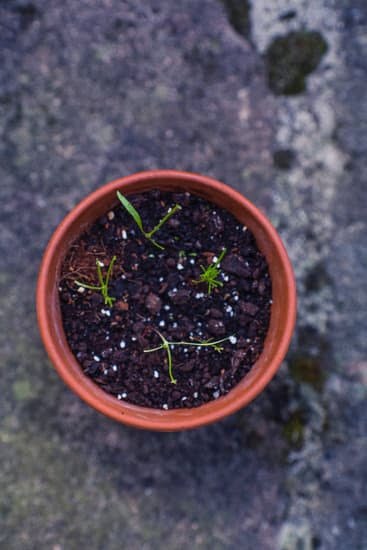If you’re looking to transform your outdoor space into a tranquil paradise, then exploring Bali garden ideas is the perfect place to start. With a rich heritage of traditional Balinese garden design, incorporating elements such as water features, lush greenery, and serene decor can bring a sense of peace and tranquility to any garden.
The island of Bali is known for its stunning natural beauty and lush landscapes, which have inspired the traditional Balinese garden design. This article will explore the key elements of Bali gardens, from traditional design concepts to modern interpretations, as well as practical tips for creating your own Bali-inspired oasis at home.
From incorporating water features to selecting the right plants and adding authentic Balinese decor and accessories, creating a Bali garden offers a unique opportunity to bring the peaceful ambiance of this tropical paradise into your own outdoor space. Whether you have a large backyard or a small balcony, there are cost-effective ways to capture the essence of Bali gardens and create a zen retreat at home.
Traditional Balinese Garden Design Elements
Harmonizing With Nature
One of the key elements in traditional Balinese garden design is the concept of harmonizing with nature. This means creating a space that seamlessly blends with the natural surroundings, incorporating the existing landscape and using natural materials. This can be achieved by introducing traditional garden features such as stone pathways, wooden pergolas, and natural water features like ponds or fountains.
Sacred Spaces
In traditional Balinese culture, gardens are seen as sacred spaces, often featuring shrines and small temples that are used for daily offerings and ceremonies. These sacred spaces can be incorporated into modern interpretations of Balinese garden design by adding small pavilions or gazebos for meditation and relaxation, surrounded by lush greenery and fragrant flowers.
Balinese Architecture
Another important element of traditional Balinese garden design is the use of traditional architecture. This includes intricately carved wooden gates, ornate stone carvings, and traditional thatched roof structures known as “alang-alang”. Incorporating these architectural elements into your own Bali garden can help create an authentic feel and provide a sense of tranquility and peace in your outdoor space.
By understanding these traditional Balinese garden design elements, you can incorporate them into your own outdoor space to create a beautiful and tranquil Bali-inspired garden that reflects the rich cultural heritage of this island paradise. With careful planning and attention to detail, you can transform your outdoor space into a serene retreat that captures the essence of Bali’s natural beauty.
Modern Interpretations of Balinese Garden Design
In modern interpretations of Balinese garden design, there is a fusion of traditional elements with contemporary ideas to create a unique and harmonious outdoor space. Here are some key aspects to consider when incorporating modern interpretations into your Bali garden:
1. Minimalist Approach: Embrace the minimalist philosophy by keeping the design simple and uncluttered. Use clean lines, open spaces, and natural materials like stone and wood for a sleek and modern look.
2. Contemporary Water Features: Incorporating water features in a modern Balinese garden adds a sense of tranquility and serenity. Consider sleek fountains or geometric ponds to create a calming atmosphere in your outdoor space.
3. Sustainable Practices: Integrate environmentally friendly practices into your garden design, such as using native plants, rainwater harvesting, and energy-efficient lighting. This not only aligns with the Balinese concept of harmony with nature but also contributes to sustainability.
When incorporating these modern interpretations into your Bali garden, it’s essential to maintain a balance between traditional Balinese elements and contemporary trends. This blend will result in a timeless and captivating outdoor space that reflects the beauty of Bali gardens while also embracing modern aesthetics.
Incorporating Water Features in Balinese Gardens
When it comes to creating a Balinese garden, incorporating water features is a crucial element that adds tranquility and beauty to the overall design. In traditional Balinese gardens, water features such as ponds, fountains, and flowing streams are commonly seen, bringing a sense of calm and serenity to the outdoor space.
Traditional Water Features
In traditional Balinese garden design, water features play a significant role in creating a harmonious and peaceful environment. Ponds filled with lotus flowers, stone-carved fountains, and strategically placed stepping stones across shallow streams are some of the iconic water elements found in Bali gardens. These features not only add visual interest but also contribute to the overall Zen atmosphere that Balinese gardens are known for.
Modern Interpretations
In modern interpretations of Balinese garden design, water features continue to be an essential aspect of the landscape. While traditional elements are still widely used, contemporary Bali gardens may also incorporate sleek water walls, minimalist reflecting pools, or even innovative rainwater harvesting systems that blend functionality with aesthetic appeal. The key is to maintain the sense of tranquility and balance while adapting to contemporary preferences.
Tips for Incorporating Water Features
When incorporating water features into your Bali garden, it’s essential to consider factors such as scale, placement, and maintenance. Larger estates may feature expansive koi ponds or cascading waterfalls, while smaller residential spaces can opt for compact fountains or simple pebble-lined basins.
Proper maintenance is also crucial to ensure that water features remain clean and free from algae or debris. By choosing suitable water features that complement the overall theme of your Bali garden, you can create a serene outdoor sanctuary that captures the essence of traditional Balinese landscapes within your own space.
Choosing the Right Plants for a Bali Garden
When creating a Bali garden, choosing the right plants is essential to capturing the authentic beauty of Balinese landscapes. Traditional Balinese gardens are known for their lush greenery, vibrant colors, and tropical atmosphere. To achieve this look in your own Bali garden, it’s important to select plants that thrive in warm and humid climates.
Here are some plant options to consider for your Bali garden:
- Frangipani (Plumeria): Known for its beautiful and fragrant flowers, frangipani is a popular choice in Balinese gardens. It adds a touch of exotic beauty and tropical charm to any outdoor space.
- Bird of Paradise (Strelitzia): With its striking orange and blue flowers, the bird of paradise plant is a stunning addition to a Bali garden. It symbolizes joy, paradise, and freedom, making it a meaningful choice for your outdoor sanctuary.
- Heliconia: Also known as lobster claw or wild plantain, heliconia brings bold splashes of color with its vibrant red or yellow bracts. This plant adds a dramatic and tropical flair to any Balinese garden.
In addition to these specific plant options, it’s important to incorporate plenty of lush foliage such as palm trees, ferns, and bamboo to create a dense and verdant landscape. When selecting plants for your Bali garden, consider both aesthetic appeal and suitability for your local climate and growing conditions.
Incorporating these tropical plants into your Bali garden will help you achieve an authentic and serene outdoor oasis inspired by the natural beauty of Bali landscapes. Whether you have a spacious yard or a small balcony space, there are various ways to infuse the essence of Balinese gardens into your own outdoor haven. Remember that proper care and maintenance are crucial for ensuring that your chosen plants thrive in their new environment.
Balinese Garden Decor and Accessories
Adding a touch of Balinese garden decor and accessories can transform your outdoor space into a tranquil oasis that reflects the beauty and serenity of Bali gardens. From traditional statuary to modern outdoor furniture, there are countless ways to incorporate these elements into your own garden design.
One essential element of Balinese garden decor is the use of stone statues and sculptures. These can range from traditional religious figures like Buddhas or Hindu deities to more abstract and contemporary designs. Incorporating these statues strategically throughout your garden can add an air of spirituality and peacefulness, creating a sense of harmony with nature.
Another popular Balinese garden accessory is the use of traditional wooden or bamboo structures, such as pergolas or gazebos. These structures not only provide shade and shelter but also serve as architectural focal points that complement the natural surroundings. Additionally, adding outdoor cushions and low-level seating in vibrant colors and patterns can create a cozy and inviting atmosphere for relaxation and meditation.
To enhance the sensory experience in your Bali garden, consider adding features such as wind chimes, water fountains, or incense burners. These elements not only contribute to the overall ambiance but also engage sight, sound, and smell to create a multi-dimensional sensory experience that promotes tranquility.
| Bali Garden Decor | Description |
|---|---|
| Stone Statues | Traditional religious figures or contemporary designs strategically placed for spiritual harmony. |
| Wooden/Bamboo Structures | Pergolas or gazebos providing shelter while complementing natural surroundings. |
| Sensory Elements | Wind chimes, water fountains, incense burners engaging sight, sound, and smell for tranquility. |
Tips for Creating a Zen Tranquil Space in Your Bali Garden
Creating a serene and tranquil space in your Bali garden is essential for creating an authentic and relaxing atmosphere. One of the key elements to achieving this is to incorporate natural materials such as stone, wood, and bamboo. These materials not only add to the overall aesthetic of the garden but also help to create a sense of harmony with nature.
In addition to natural materials, consider adding traditional Balinese decor such as carved stone statues, wooden sculptures, and hand-painted pottery. These elements can serve as focal points within the garden and further enhance its Zen-like ambiance. When placing these decorative items, be sure to do so in a way that feels balanced and harmonious with the surrounding plantings.
Another important aspect of creating a tranquil space in your Bali garden is to carefully plan and design the layout. Consider incorporating meandering pathways lined with lush vegetation or gently flowing water features. These design elements can help to create a sense of journey and discovery within the garden, encouraging visitors to slow down and take in the beauty of their surroundings.
| Element | Description |
|---|---|
| Natural Materials | Incorporate stone, wood, and bamboo for an authentic atmosphere. |
| Balinese Decor | Add carved stone statues, wooden sculptures, and hand-painted pottery for a traditional touch. |
| Layout Design | Plan meandering pathways lined with lush vegetation or water features for a sense of journey. |
Balinese Garden Maintenance and Care
One important aspect of Balinese garden maintenance is regular pruning and trimming of plants. Balinese gardens often feature lush, tropical greenery that requires frequent maintenance to keep them looking their best. It’s important to trim overgrown branches, remove dead leaves, and ensure that plants are thriving in their environment. Additionally, regular fertilization and pest control are necessary to promote healthy plant growth in a Bali garden.
In addition to plant care, maintaining water features such as ponds, fountains, or cascades is crucial in a Balinese garden. Keeping the water clean and free of debris is essential not only for aesthetic purposes but also for the health of any aquatic life within the feature.
Regular cleaning and maintenance of water pumps or filters can help ensure that water features remain functional and visually appealing. Incorporating natural elements such as rocks or pebbles around water features can also contribute to a more authentic Balinese garden look while reducing maintenance needs.
Overall, caring for a Bali garden involves attention to detail, regular maintenance tasks, and a commitment to preserving the natural beauty of traditional Balinese design elements. With proper care and attention, you can create a stunning outdoor space inspired by the beauty of Bali gardens right in your own backyard.
Creating a Balinese Garden on a Budget
Creating a beautiful Balinese garden doesn’t necessarily have to break the bank. With some creativity and resourcefulness, you can transform your outdoor space into a tranquil oasis inspired by the stunning gardens of Bali. Here are some budget-friendly ideas to help you achieve the look and feel of a Balinese garden without spending a fortune.
One cost-effective way to incorporate traditional Balinese design elements into your garden is by using natural materials such as bamboo, stone, and wood. Bamboo fencing or trellises can create privacy and add an authentic touch to your outdoor space.
You can also use stone or gravel pathways to divide different areas of the garden, adding texture and visual interest without a hefty price tag. Additionally, incorporating wooden furniture or sculptures can further enhance the Balinese aesthetic without breaking the budget.
When it comes to choosing plants for your Balinese garden, opt for low-maintenance and locally-sourced species that thrive in your climate. Tropical plants like palms, ferns, and orchids are classic choices for Balinese gardens and can often be found at affordable prices from local nurseries or through plant swaps with friends and neighbors. By selecting plants that are well-suited to your region, you can create a lush and inviting garden without overspending on costly exotic species.
In terms of decor and accessories, consider repurposing or upcycling items to achieve the desired Balinese look. For example, old ceramic pots or jars can be transformed into unique planters with a coat of paint in earthy tones or vibrant colors commonly seen in traditional Balinese gardens. You can also source decorative elements such as statues, lanterns, or wind chimes from thrift stores or garage sales to add character and charm to your outdoor sanctuary while staying within budget.
By embracing resourcefulness and creativity, anyone can bring the beauty of Bali gardens to their own outdoor space without breaking the bank. From using natural materials like bamboo and stone to selecting locally-sourced plants and repurposing decor items, there are countless affordable ways to create a serene and inviting Balinese-inspired garden in any setting. With these budget-friendly ideas, you can transform your outdoor area into a peaceful retreat reminiscent of the exotic beauty of Bali gardens.
Conclusion
In conclusion, Bali gardens offer a perfect blend of traditional and modern design elements that can transform any outdoor space into a tranquil oasis. Whether you are looking to create a serene escape at home, incorporate water features, or simply enhance your garden with Balinese decor and accessories, there are endless possibilities to draw inspiration from Bali gardens ideas.
By incorporating traditional Balinese garden design elements such as lush greenery, stone statues, and intricate carvings, you can infuse your outdoor space with the timeless beauty and charm of Bali. Additionally, modern interpretations of Balinese garden design allow for creative expression and customization to suit different preferences and lifestyles.
When it comes to choosing the right plants for a Bali garden, selecting tropical species and indigenous flora will help to maintain an authentic look while also ensuring the health and vitality of your garden. Furthermore, creating a zen tranquil space in your Bali garden involves careful planning of layout, introducing calming water features, and incorporating natural materials to evoke a sense of serenity.
In essence, by following the tips for creating a Balinese garden on a budget and implementing effective maintenance and care practices, anyone can bring the beauty of Bali gardens to their own outdoor space. With the right combination of elements and mindful attention to detail, you can create an inviting retreat that reflects the peaceful ambiance and striking aesthetics of traditional Balinese gardens.
Frequently Asked Questions
How to Design a Bali Garden?
Designing a Bali garden involves incorporating traditional elements such as lush greenery, water features, and stone statues or carvings. Using natural materials like thatch, bamboo, and wood for structures adds to the authentic Balinese feel.
What Plants Grow Well in Balinese Garden?
Balinese gardens are known for their tropical vegetation, so plants that thrive in warm, humid climates are ideal. This includes species like frangipani, heliconia, bird of paradise, and various types of palms. These plants not only add color and texture but also contribute to the overall exotic ambiance of a Balinese garden.
What Is a Balinese Garden?
A Balinese garden is a type of tropical landscape that encompasses a blend of nature, spirituality, and artistry. It typically features dense foliage, colorful flowers, serene water elements like ponds or fountains, and ornate stone statues or carvings.
The goal is to create a tranquil sanctuary that reflects the beauty of the natural environment while promoting harmony and balance within the space.

Welcome to my gardening blog! I am passionate about plants and enjoy sharing my knowledge and experiences with others. In this blog, I will write about everything related to gardening, from tips on how to get started to updates on my own garden projects.





